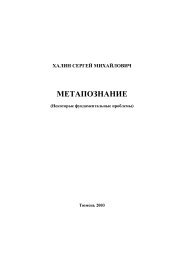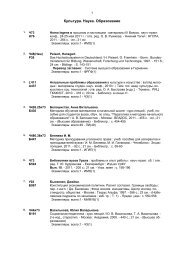The Economic History of Byzantium - Dumbarton Oaks
The Economic History of Byzantium - Dumbarton Oaks
The Economic History of Byzantium - Dumbarton Oaks
Create successful ePaper yourself
Turn your PDF publications into a flip-book with our unique Google optimized e-Paper software.
990 NICOLAS OIKONOMIDES<br />
An Overview<br />
<strong>The</strong> general picture that I have been presenting seems to have been completed by<br />
around the year 800, when we have some information about the public economy<br />
thanks to the tax relief granted by Empress Irene (797–802); 41 taxation was based on<br />
the value <strong>of</strong> the taxed goods and paid in gold (this applied also to the personal tax<br />
called the kapnikon). Movements <strong>of</strong> goods by land and sea were subject to various toll<br />
charges, the most important <strong>of</strong> which is traditionally held to be that levied on passage<br />
through the straits that led to Constantinople. Rent amounting to one-third <strong>of</strong> the<br />
product was charged on the use <strong>of</strong> state assets. Military service was regarded as a tax<br />
obligation and was inherited since it was charged on soldiers’ land.<br />
We have a greater volume <strong>of</strong> information about the ten “vexations” (kakw´ sei") imposed<br />
by Irene’s successor, Nikephoros I, “the former general logothetes” (802–811), in<br />
his attempt to revitalize the state economy. 42 We are told that apart from cancelling<br />
some tax exemptions (such as the exemption <strong>of</strong> charitable institutions from the kapnikon),<br />
this emperor set up a special tax court in an attempt to demand that all citizens—<br />
and especially the wealthier citizens who evaded tax—pay the taxes that truly fell to<br />
their lot. <strong>The</strong> principle <strong>of</strong> hikanosis (i.e., <strong>of</strong> the sequestration from the owner <strong>of</strong> any<br />
land in excess <strong>of</strong> that corresponding to the tax he had paid) had by now been introduced<br />
and was yielding good results in conjunction with an increase in taxation. <strong>The</strong><br />
compilation <strong>of</strong> a new land register provided an opportunity for the imposition <strong>of</strong> a<br />
special levy, the chartiatika, which soon became a permanent increment on tax under<br />
the name <strong>of</strong> dikeraton. Treasure trove was, by tradition, taxed at 50%; cases <strong>of</strong> sudden<br />
enrichment and sales and purchases <strong>of</strong> slaves were also taxed. <strong>The</strong> small shipowners<br />
<strong>of</strong> the provinces were compelled to buy land in order to join the war navy, while the<br />
large shipowners <strong>of</strong> Constantinople were obliged to conclude an onerous compulsory<br />
loan, and thus intensify their activities and expand the role they played in the general<br />
economy <strong>of</strong> the empire.<br />
<strong>The</strong> picture provided by the state economy in 800 is indicative <strong>of</strong> the end <strong>of</strong> one era<br />
and the beginning <strong>of</strong> the next. <strong>The</strong> process <strong>of</strong> evolution in the economic institutions—<br />
aprocess that began under Herakleios or even earlier—was complete. All the characteristics<br />
<strong>of</strong> the state economy <strong>of</strong> the middle Byzantine period, <strong>of</strong> which we know more<br />
because there is more source material, were now in place.<br />
<strong>The</strong> Command Economy <strong>of</strong> the State (9th–11th Centuries)<br />
During this period, 43 the state economy appears to have been almost entirely monetized,<br />
at least with regard to the basic taxes (land tax and personal tax) and the princi-<br />
41 Known to us from <strong>The</strong>ophanes and <strong>The</strong>odore <strong>of</strong> Stoudios, ep. 7.<br />
42 <strong>The</strong>ophanes, 486, 487, 488, 489, 492. Cf. Ioannis Zonarae Epitome historiarum, ed. T. Büttner-<br />
Wobst (Bonn, 1897), 3.306–8 (hereafter Zonaras). <strong>The</strong> ten vexations <strong>of</strong> Nikephoros have been studied<br />
systematically by A. Christophilopoulou, Buzantinh` JIstoría, vol. 2, 610–867 (Athens, 1981), 166–71.<br />
43 <strong>The</strong> account that follows is based on Oikonomides, Fiscalité. At many points I disagree with<br />
W. Treadgold, <strong>The</strong> Byzantine State Finances in the Eighth and Ninth Centuries (New York, 1982), which








